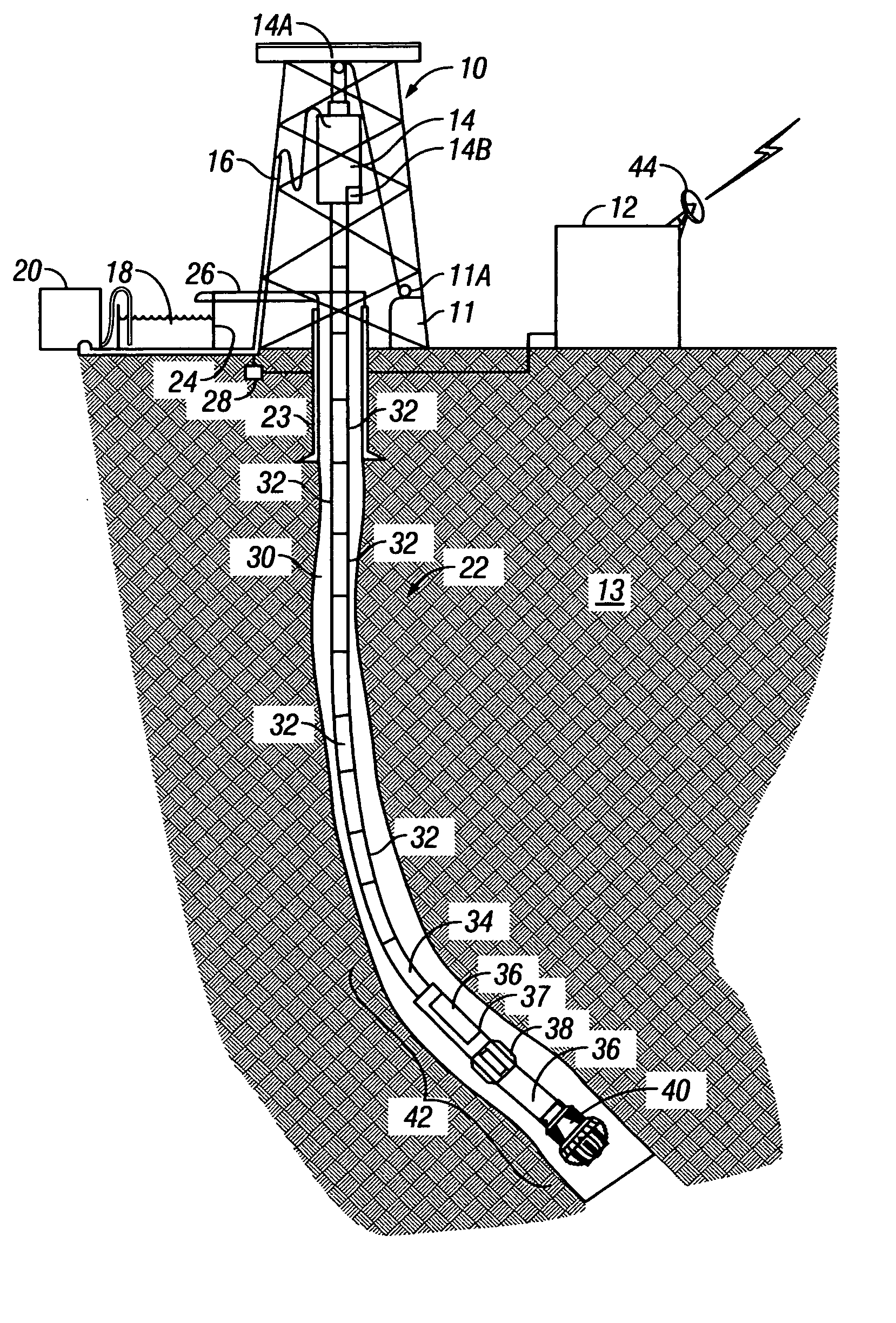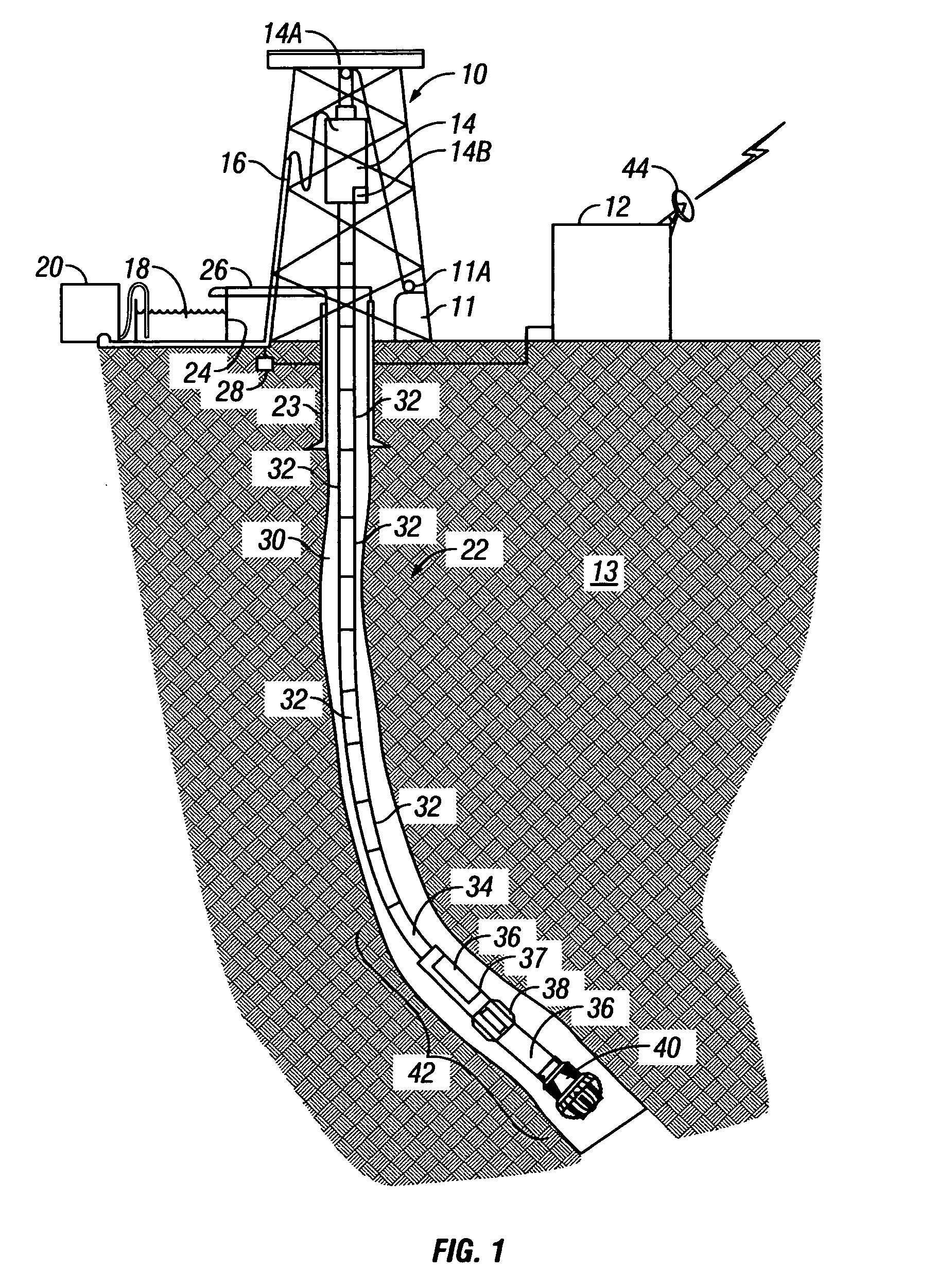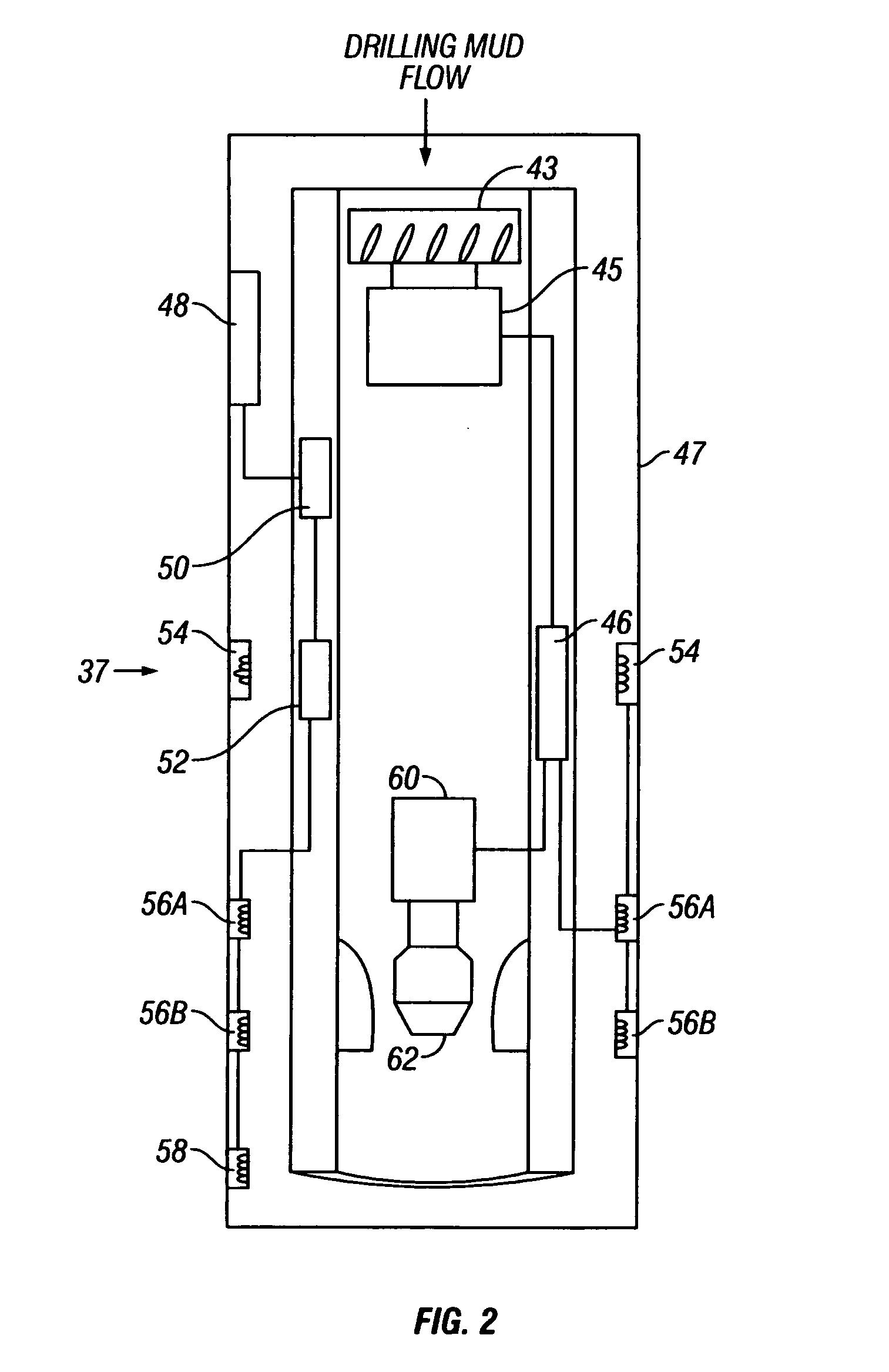Method for improving drilling depth measurements
a drilling depth and measurement method technology, applied in the field of drilling wellbores through the earth, can solve the problems of time and for determining the depth of drilling, the axial length of drilling string changes are not well-accounted for, and the measurement of drive vertical position is not ideal
- Summary
- Abstract
- Description
- Claims
- Application Information
AI Technical Summary
Benefits of technology
Problems solved by technology
Method used
Image
Examples
Embodiment Construction
[0029]FIG. 1 shows a typical wellbore drilling operation from which data may be measured and used with various embodiments of the invention. A drilling rig 10 includes a drawworks 11 or similar lifting device known in the art to raise, suspend and lower a drill string. The drawworks 11 for purposes of this description is described collectively and includes a hook, traveling block, wire rope or cable spooled by a winch, and other lifting and control devices well known in the art for lifting and suspending a drill string.
[0030]The drill string includes a number of threadedly coupled sections of drill pipe, shown generally at 32, that extend to the earth's surface at one end. A lowermost part of the drill string is known as a bottom hole assembly (BHA) 42. The BHA 42 includes, in the embodiment of FIG. 1, a drill bit 40 at the lowermost end to cut through earth formations 13 below the earth's surface. The drill bit 40 may be one of many types well known in the art, including roller con...
PUM
 Login to View More
Login to View More Abstract
Description
Claims
Application Information
 Login to View More
Login to View More - R&D
- Intellectual Property
- Life Sciences
- Materials
- Tech Scout
- Unparalleled Data Quality
- Higher Quality Content
- 60% Fewer Hallucinations
Browse by: Latest US Patents, China's latest patents, Technical Efficacy Thesaurus, Application Domain, Technology Topic, Popular Technical Reports.
© 2025 PatSnap. All rights reserved.Legal|Privacy policy|Modern Slavery Act Transparency Statement|Sitemap|About US| Contact US: help@patsnap.com



